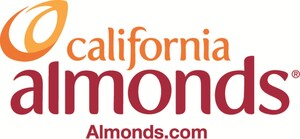MODESTO, Calif., May 23, 2016 /PRNewswire/ -- Almond Board of California and Lawrence Berkeley National Laboratory (Berkeley Lab) today announced a new partnership focused on better understanding subsurface water storage, quality and movement in relation to almond orchard groundwater recharge test sites. This important research will join the ongoing efforts by University of California, Davis and others to understand the potential of using California's almond orchards for groundwater recharge.
The Almond Board has to date funded Berkeley Lab, a U.S. Department of Energy national laboratory system charged with conducting unclassified research across a wide range of scientific disciplines, with $105,840 to study what's happening underground at almond orchard groundwater recharge test sites. The research will be led by Peter Nico, PhD, Head of Berkeley Lab's Geochemistry Department.
"We have a lot of expertise in understanding the subsurface, using various geophysical imaging techniques, measuring chemical changes and using different types of hydrologic and reactive transport models to simulate what's happening in the soil," Nico said. "So our expertise matches up very well with the need to evaluate which test sites have the most potential."
While groundwater is coming under management by the state of California through the Sustainable Groundwater Management Act, research and data is critically needed to fully understand the dynamics of groundwater recharge under a variety of conditions. Recharging groundwater returns water to underground aquifers, collectively California's largest water storage system, through managed flooding using seasonal floodwater.
"The potential for using almond orchards for groundwater recharge is an increasingly important research area for us to understand as California's precipitation begins to shift from winter snow to rain, which is more difficult to time and store," said Gabriele Ludwig, PhD, Director of Sustainability and Environmental Affairs at the Almond Board. "Preliminary analysis of almond acreage indicates that nearly 675,000 acres are moderately good or better in their ability to recharge groundwater, and the new research with Berkeley Lab will bring even more insight into the progress to date."
Berkeley Lab scientists have expertise in using geophysical imaging, which allows them to "see" underground without drilling a well.
"We have very sophisticated hydrologic and geochemical computer codes we think we can couple with imaging to predict where water will go, and also importantly, how its chemistry may change through storage or retrieval," Nico said.
The Berkeley Lab scientists will add particular expertise on the deeper subsurface, below the root zone of the almond trees.
This project is part of the Almond Board's larger Accelerated Innovation Management (AIM) program, which includes an emphasis on creating more sustainable water resources for farmers as well as all Californians.
The new Berkeley Lab partnership expands ongoing existing Almond Board-funded work underway to identify which orchards are suitable for recharge; gauge groundwater recharge efforts' effects on almond trees; and conduct advocacy work to ensure groundwater storage is a policy priority. Current partners include University of California, Davis; the environmental non-profit group Sustainable Conservation; and the agricultural sciences and private research firm Land IQ.
While this year's El Niño storms provided some short term relief, the ongoing drought continues to impact all Californians.
"The California almond community is committed to weathering this storm, or lack thereof, by continuing its nearly half a century of investment in research and improved production practices with the goal of responsible and sustainable[1] use of California's valuable natural resources," Ludwig said.
Through more than 100 innovative Almond Board-funded research projects since 1982, California almond growers have incorporated state-of-the-art, research-proven irrigation practices that have reduced the amount of water needed to grow each pound of almonds by 33 percent[2].
All project partners believe on-farm groundwater recharge has great potential to help manage California's vital groundwater resources sustainably. In the longer term, the results of the research may pave the way for a portion of California's more than one million acres of almond orchard to be used as on-farm recharge sites, a valuable tool for the Groundwater Sustainability Agencies (GSAs) created by the Sustainable Groundwater Management Act to use in developing and implementing their Groundwater Sustainability Plans.
DETAILS ABOUT OTHER PROJECT PARTNERS' RECHARGE EFFORTS:
- Sustainable Conservation is engaging with farmers and growers on promoting practices and quantifying the costs of groundwater recharge. Sustainable Conservation is also collaborating with GSAs, advocating for recharge and researching water quality to ensure water that travels past the root zone dilutes legacy nutrients.
- A team of Almond Board-funded UC Davis researchers are tracking soil moisture, water movement, and tree and root health in almond orchards and measuring how they vary with local soil and weather conditions. Two orchard trials were flooded this past winter, and UC Davis is studying where groundwater recharge can take place without negatively impacting orchard health and crop yields. The findings will assist in identifying the orchard practices and conditions that are most suited for groundwater recharge, and which orchards can be part of a sustainable solution to periodic droughts and groundwater overdraft.
- Land IQ, a cutting-edge agricultural technology firm, has built on research and results from UC Davis, the California Department of Water Resources, and the United States Geological Survey, to identify where almond orchards and associated infrastructure requirements overlay soils and geology suitable for groundwater recharge. Initial findings indicate that nearly 675,000 acres of almond orchards are moderately good or better in their ability to recharge groundwater.[3]
About Almond Board of California
Almonds from California are a natural, wholesome and quality food. The Almond Board of California promotes almonds through its research-based approach to all aspects of marketing, farming and production on behalf of the more than 6,800 almond growers and processors in California, many of which are multi-generational family operations. Established in 1950 and based in Modesto, California, the Almond Board of California is a non-profit organization that administers a grower-enacted Federal Marketing Order under the supervision of the United States Department of Agriculture. For more information on the Almond Board of California or almonds, visit Almonds.com or AlmondSustainability.org. Be sure to check out California Almonds on Facebook, Twitter, Pinterest, Instagram and the California Almonds blog.
About Lawrence Berkeley National Laboratory
Lawrence Berkeley National Laboratory addresses the world's most urgent scientific challenges by advancing sustainable energy, protecting human health, creating new materials, and revealing the origin and fate of the universe. Founded in 1931, Berkeley Lab's scientific expertise has been recognized with 13 Nobel prizes. The University of California manages Berkeley Lab for the U.S. Department of Energy's Office of Science. For more, visit www.lbl.gov.
| Contacts |
|
| Almond Board of California |
Lawrence Berkeley National Laboratory |
| Carissa Sauer |
Julie Chao |
| (209) 343-3284 |
(510)-486-6491 |
| Kate Northway |
|
| (212) 601-8241 |
|
[1] What defines California Almond sustainability? Sustainable almond farming utilizes production practices that are economically viable and are based upon scientific research, common sense and a respect for the environment, neighbors and employees. The result is a plentiful, nutritious, safe food product.
[2] University of California. UC Drought Management. Feb. 2010. Food and Agriculture Organization of the UN. FAO Irrigation and Drainage Paper 66 – Crop yield in response to water. 2012. Almond Board of California. Almond Almanac 1990-94, 2000-14.
[3] Land IQ. Groundwater Recharge Suitability Analysis. Nov. 2015. Based on data from UC Davis Soil Agricultural Groundwater Banking Index, California DWR Groundwater Levels, USGS Central Valley Hydrologic Model Well Logs, USGS Corcoran Clay Extent, DWR Irrigation District Coverage, USGS Hydrology and Points of Diversion. - See more at: http://www.almonds.com/blog/about-almond-board/california-almond-acreage-grows-trees-bring-benefits-agriculture-environment#sthash.AQBnf1KE.dpuf
Photo - http://photos.prnewswire.com/prnh/20160523/370908-INFO
Logo - http://photos.prnewswire.com/prnh/20160523/370890LOGO
SOURCE Almond Board of California
Related Links
WANT YOUR COMPANY'S NEWS FEATURED ON PRNEWSWIRE.COM?
Newsrooms &
Influencers
Digital Media
Outlets
Journalists
Opted In





Share this article